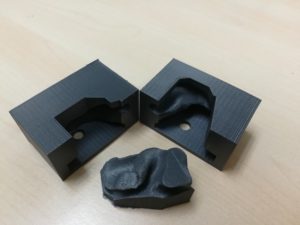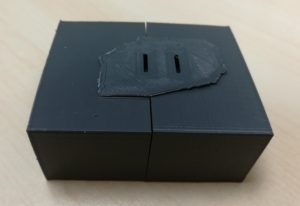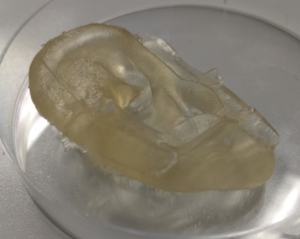Regenerat3D uses an innovative molding technique to create vascularization and consistency.

Two-Piece Mold

Two-Piece Mold Formed

Molded Hydrogel Ear
As the demand for organ donors increases, the need for an alternative source of organ tissues arises. By using 3D-bioprinting technology for manufacturing, Regenerat3D provides customizable, cost-effective tissues per customer’s needs. With Regenerat3D’s state of the art bioprinting and molding method, organs can be produced for research use. As seen on the figures on the left, we started with the two-piece mold and transitioned into the updated 8-piece mold
to increase resolution and decrease air bubbles or defects.

8-Piece Mold
Currently, research groups and institutes can only obtain organs for research from donations;
and even then, the organs may not be available in good condition. Our services are also available for the drug development industry. The production of 3D printed tissue will initially be exclusively available for clinical research while transplantable organs will be in development. The production of molds, hydrogels and final product will all be internal. Raw materials such as filaments, chemicals, printers, and cell cultivation will be outsourced. This will maximize the quality of Regenerat3D’s products since their production is a delicate procedure.
